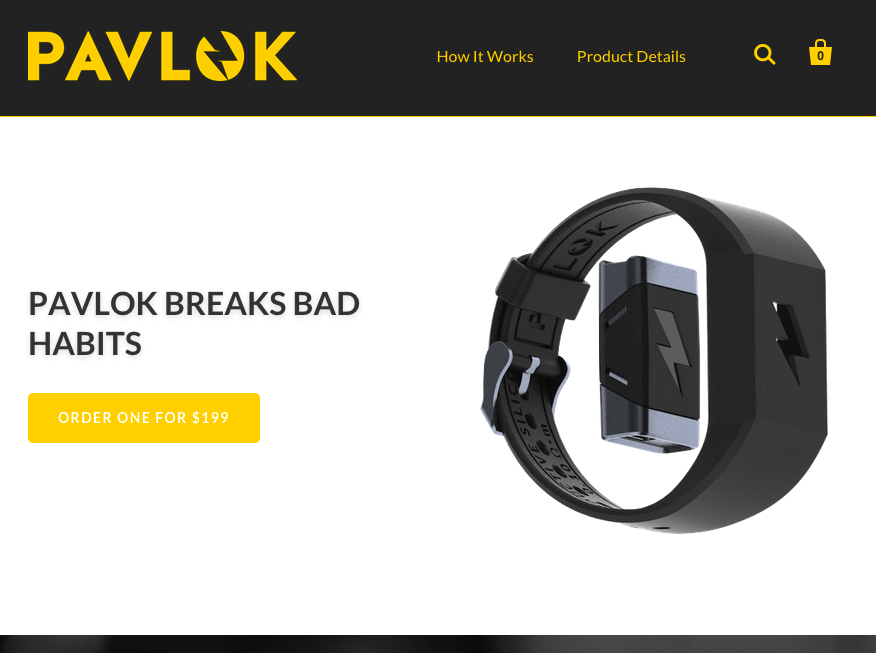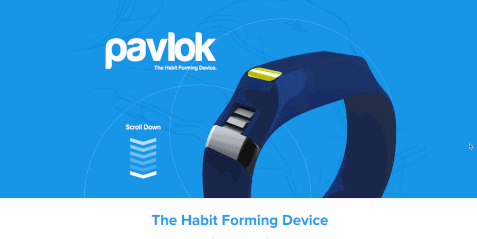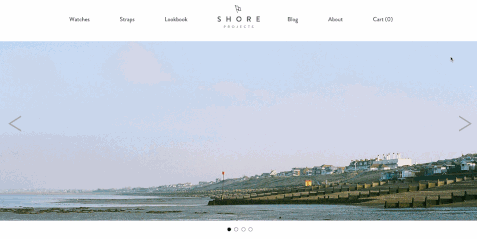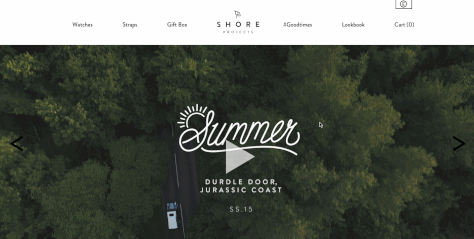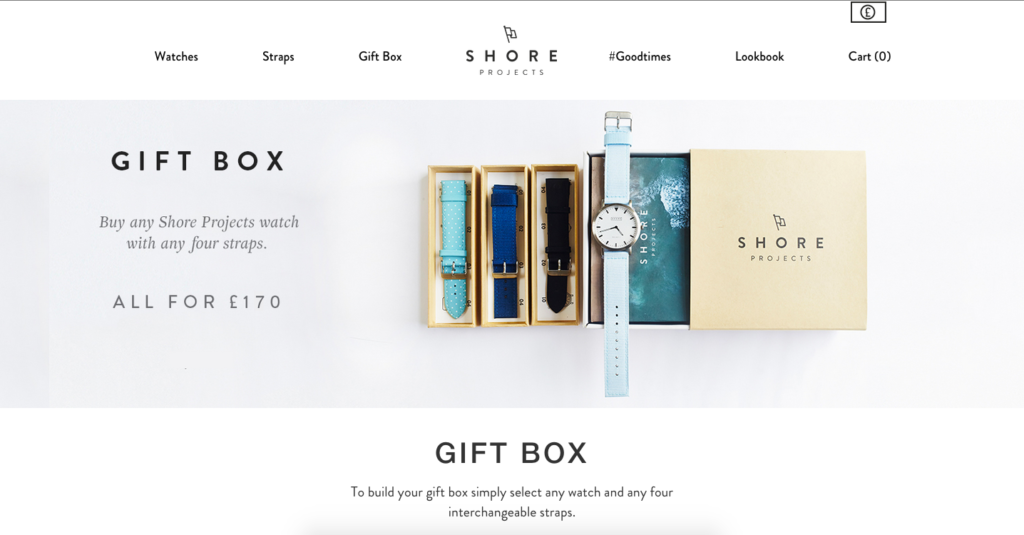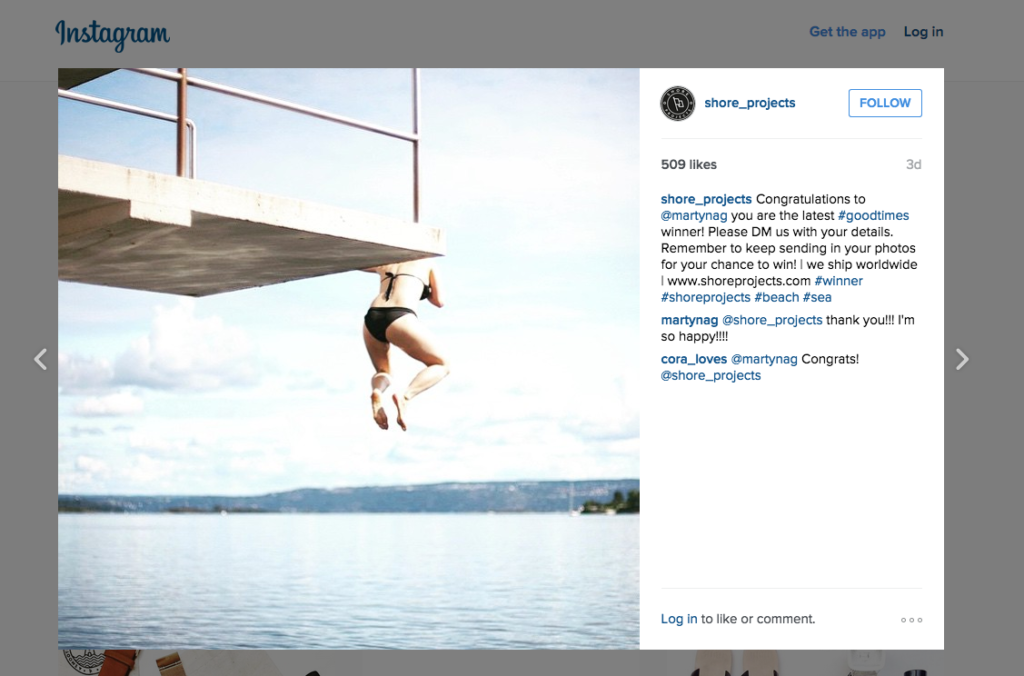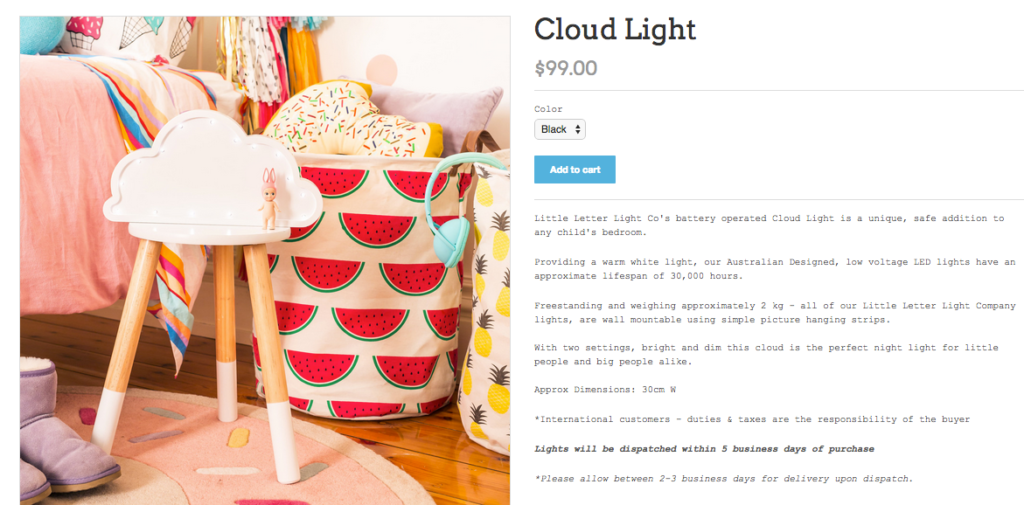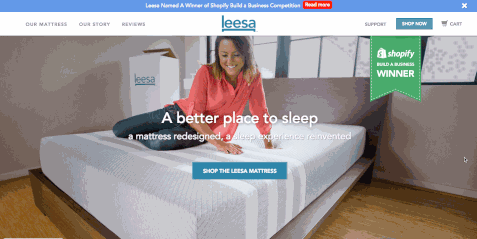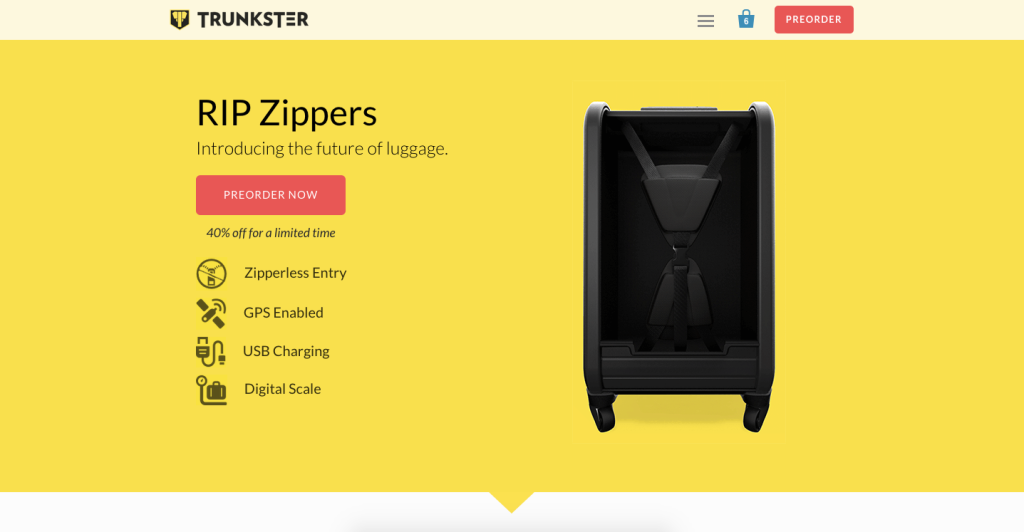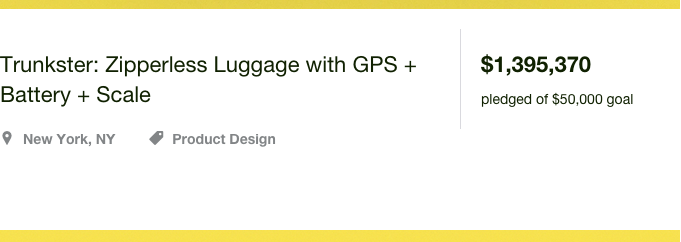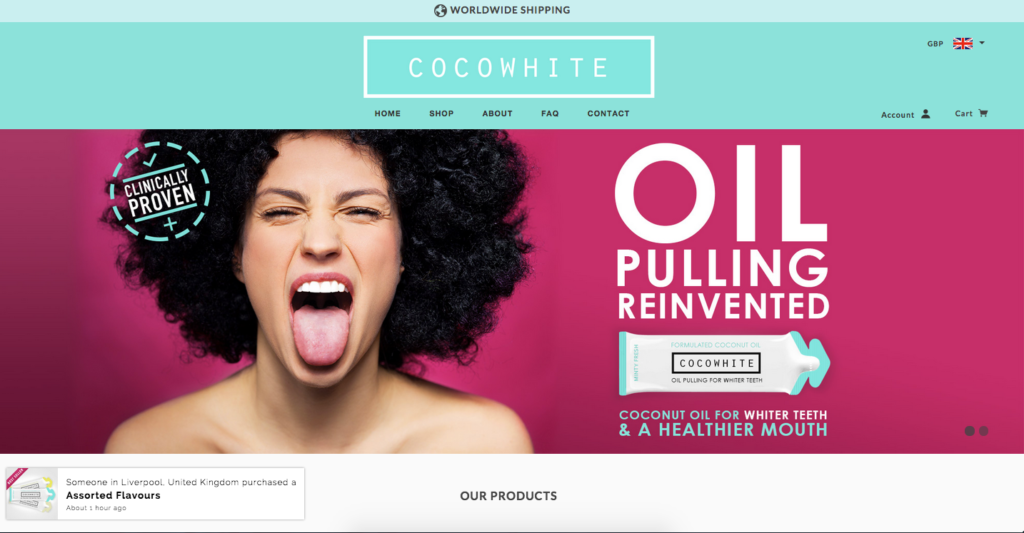Are you struggling to make some sales this week? Or are you trying to take your store to the next level but not sure how to do it?
Then the success stories of stores going from 0 sales to 7 figures overnight might be utterly demotivating.
The truth is that a lot of these stories are nothing more than thinly veiled press releases.
They focus mainly on the outcomes (1 million in sales!!) while brushing over what actually went on behind the scenes – which makes it hard to learn from them.
The biggest challenge is translating what you read into something you can actually use in your own store RIGHT NOW.
In this article, I’ll lift the veil on some of these ‘rags to riches’ stories and show you how they actually made money.
Finding great case studies subjects

Every year Shopify runs its Build a Business competition with tens of thousand of online stores going head to head in a sales competition.
As a reward they get to enjoy a weekend on Necker Island (Richard Branson’s private island) being mentored by sir Richard himself, Tim Ferriss, Daymond John, Seth Godin and Marie Forleo.
The 6 winning stores that came out of this years eight-month competition generated between $300,000 and $750,000 a month in sales during their two most profitable months (that’s what counted for Shopify).
But they all started in the same place, with zero sales and no brand recognition.
In this post, I’m going to explore the main drivers behind their success and how you can replicate these in your own store, no matter where you are on your way between 0 sales and Necker Island!
Store 1: Pavlok
Pavlok sells a bracelet that will change your habits with the help of electric shocks.
In October 2014 the company launched an Indiegogo campaign which passed its $50k goal on day one and finished 30 days later at $280,000.
With these funds and associated brand recognition, they continued to build out their store and to keep growing.
Let’s take a look what made the Pavlok crowdfunding campaign a success.
It’s simple product with a good name and great hook: it helps you get rid of bad habits with electric shocks!
That’s all the shock value many press outlets needed. Pavlok was covered on all kinds of sites: on tech news sites like TechCrunch, gadget blogs like Engadget and even the Yahoo homepage.
Even bigger was the exposure they got on US national TV shows like Jimmy Fallon, The Colbert Show and Steve Harvey.
All that coverage was also heavily shared on social media sites which gave the campaign another traffic boost.
So what’s the takeaway here?
- Come up with a cool product
- Launch a crowdfunding campaign
- Pack your bags for Necker Island?
Unfortunately it’s not that easy.
Platforms like Kickstarter and Indiegogo are graveyards of cool product ideas that never get the funds they need.
The successful crowdfunding campaign and tons of press appearances are only the result of the foundational work that Pavlok’s founder, Maneesh Sethi put in long before they launched their campaign.
To understand what he did, we need to go back to where the idea for Pavlok was first explored: on his blog.
Sethi has been running a blog called Hack the System since 2009 and writes about how to create new habits and get rid of bad ones.
All that time not only allowed him to learn more about the psychological and practical details behind habit formation, but more importantly, it allowed him to build an audience.
Building an audience
He built up a loyal following through posting regularly on his blog, engaging with readers in the comments, getting people on his email list and even through a habit forming program he ran in a Facebook group.
In a post in November 2013 he first mentioned Pavlok & immediately there where 40 people commenting on the post that they couldn’t wait to start using the product.
But he didn’t launch then, he spent another year developing the product and building his audience.
There was a simple landing page up on pavlok.com that collected the email addresses of people that were interested:
During all of this time he also build other relationships with influencers and people in media that could help him.
One great example is author Tim Ferris who turned to Sethi to help him out with the launch of The 4-Hour Chef in 2012, which gives a good idea of his PR chops.
Find out more about Pavlok
website – Facebook
PRINCIPLE 1: Build Your Audience
Start to build your own audience as soon as you can.
People will pay attention when you give something of value to them, when you let them have their say or give them the feeling that you’re co-creating.
If they feel like they are part of something special, they will turn into super fans.
And when you most need them, to back your crowdfunding campaign or spread the word about your new product, they’ll be ready for you.
Store 2: Shore Projects
Shore Projects is an online store that sells minimalist watches with detachable straps.
They are based in the UK, but have shipped orders to over 100 countries.
To get a feeling of what they have been doing since they’ve launched their store I’ve compared the homepages from June 2014 & July 2015.
Besides the photography, not a lot has changed on their website.
But behind the scenes they’ve definitely been busy throughout the year; they launched a couple of new collections and have gone from 4 watches and 8 straps, to 14 different watches with 24 straps.
Because it’s a fashion brand, the expansion in products isn’t a strange thing. Creating new watches keeps the brand fresh and people interested. And every new collection is a good opportunity to get press.
Their prices have also increased slightly: watches went up from £85 GBP to £115 and the straps saw a similar increase. This increase could have improved their margins or injected more cash into the business for growth.
The main navigation menu holds some clues to what they have done throughout the year. There are 2 new items: Gift Box & #Goodtimes since last year.
Shore Projects Gift Box
This Gift Box is a bundling of a watch and a 3 straps which they sell for £170.
If they wouldn’t present this product bundle as such, I don’t know how many people would buy a watch and 3 different straps separately. But I doubt there would be many.
Maybe people would buy one watch of £115 plus a strap of max £40, which would result in a £155 order.
For only £15 extra people can now get 3 straps.
This bundle means a nice increase of their average order value.
They launched this product in time for the Christmas holiday season.
And today it’s still part of their navigation menu. I have no doubt that it continues to sell well, with people buying it as a gift for others, or for themselves if they can’t decided on which strap to get.
PRINCIPLE 2: Create product bundles
The hardest part is getting qualified buyers onto your site. Once they are there, it makes sense to get the best possible offer in front of them.
You can have visitors go through your whole catalogue and consider every product separately.
Or you can take the initiative and suggest a larger quantity of the same product or complementary products together in one bundle at a discount.
This can make their experience better and a lot more profitable for you.
Selling more products per order increases your average order value and drives up overall volume.
Shore Projects has a great eye for design: their store, photography and products look gorgeous.
Their own Instagram account is a mix of professional shots mixed with inspiring fan submissions.
For their #goodtimes contest they encourage fans to share pictures on Instagram of what they consider to be good times.
As a reward, Shore Projects has weekly and monthly product giveaways.
Because the #goodtimes hashtag is a pretty popular one (over 40M posts), it’s hard to track the number of submissions that have been made specifically for the contest.
But this overview can help us get a picture of what they are doing on Instagram:
- @shore_projects has 30,600 followers
- #shoreprojects – 10,389 posts with this tag
- #shoreprojects + #goodtimes – 308 posts with both tags
- 78 contest submissions in the last 7 days
That last number might not be that crazy. But it’s not limited to the 312 people a month that send it their pictures, it’s also all of their followers that are exposed to the brand.
Discover more about Shore Projects:
website – instagram
PRINCIPLE 3: Dangle a carrot to attract more fans
Principle 1 already covered the foundation of building an audience: offer something of value in exchange for people becoming your Instagram fan, liking you on Facebook or joining your email list.
But real growth doesn’t come from simply putting out more content on these platforms.
It comes from being exposed to new audience: the friends of your fans and beyond.
To get people to refer others (even it’s not that explicit) you need to make it worthwhile for people to take the extra effort.
Products giveaways, discounts or even exclusive content can accomplish this.
Store 3: Little Letter Lights Co.
Little Letter Lights Co. sells beautiful and cosy lights in all kinds of shapes.
Out of the 6 winners of the Shopify competition, this is the only store that was started by a first-time entrepreneur.
But even without marketing tricks up her sleeves, founder Lucy Nourse was still able to generate a truckload of sales!
Looking at the products, it’s no surprise that they are doing well. The products are unique, well designed and very personal (who wouldn’t love a light with the letter of their first name!)
Their product photography features their lights in beautifully decorated children’s rooms.
This type of inspirational content is perfect for social media. Little Letter Lights Co. has got about 36k followers on Instagram and 6k fans on Facebook.
Their own Instagram feed is a nice mix between inspirational quotes, product shots, store announcements and featured reader pictures.
But there is an important additional benefit from not having dry product shots.
The picture above features their Cloud Light. But besides that, there are plenty of other products in this picture: a stool, boots, a basket, pillows, a bed cover, headphones, etc.
The companies behind these products are trying to reach the exact same audience. That opens up a lot of opportunities to collaborate or cross-promote each other’s products.
This probably happens more organically than I make it out to be: Little Letter Lights Co. want good looking photos so they use products they like.
Next to the product companies there are also a lot of other people they connect with: interior designers, photographers, design magazines, stylists and even baby and children fairs.
That’s for example how one of their products got featured on Kim Kardashians Instagram to promote a new clothing collection.
Next to these industry connections they are also going after “regular” influencers like mommy bloggers.
Fuelled by cute baby pictures and giveaway they ensures maximal efficiency:
PRINCIPLE 4: Reach out to your neighbours
Your store doesn’t exist in a vacuum.
There are competitors but there are also stores that sell complementary products, suppliers, magazines, fairs, etc.
All of these companies are trying to reach the same people as you are.
And while not every one of those will be a great fit to work with, these cooperations can work wonders to get more awareness or grow your customer base.
Don’t re-invent the wheel, reach out to these people and see what you can do together.
Store 4: Leesa
Leesa is one of the most interesting stores here because they are transparant with their numbers and because they are going against a very traditional industry: mattresses.
They started creating their products in June 2014 and made their first sale in November.
The numbers
Between March and May 2015, Leesa had 80,000 visits and with an average conversion rate of 2.7% on all visits, that resulted in 1992 orders.
To make calculations easier let’s say all customers order their cheapest mattress ($525), 1992 orders results in $1,045,800 in sales.
If they would all order the default mattress on Leesa’s product page ($890), the same amount of orders would bring in $1,772,880.
Neither number will be totally accurate, so let’s take an average to smooth out the differences which means $1.4M during 3 months, or about $470k/month.
So how where they able to generate all those sales? Let’s take a look at their different marketing strategies.
Social Impact with their “One For Ten” program
Leesa donates 1 mattress for every 10 it sells to places like homeless shelters.
This is a great way to give back to society and also a great approach to marketing (go ask TOMS).
Because Leesa gives back to local communities, every donation also generates local press that shows the company from its best side: generous and caring for the community.
This improves their brand awareness, but to generate volume, they turned somewhere else.
Crank up the volume with advertising
Leesa’s founder David Wolfe claims to be the first person to ever pay for the search keyword cruise in 1996.
So he knows from experience that Google Adwords can deliver sales at scale.
But the biggest portion of their sales comes from Facebook advertising.
I had a look at the performance of a couple of recent Facebook Ads:
- Recent Shopify announcement – 7274 clicks – 192 orders
- Fathers Day promotion – 13970 clicks – 377 orders
These are just the posts that are visible on their timeline. With a solid conversion rate and a great way to drive traffic, I have no doubt that they ran a lot of other Facebook campaigns.
Optimizing for conversions
If you look at the Leesa store, they are doing a lot of things right to get to that solid conversion rate.
- Simple product: they only have one product in different sizes. That makes it easier for a visitor to understand what they have to offer
- Customer reviews: with over 700 very positive customer reviews, potential buyers can get a lot of their questions answered by their peers
- 100 night trial guarantee: this one helps to close deal with customer questions that want first hand experience
- Free shipping
Discover more about Leesa
Website – Facebook
PRINCIPLE 5: Mastering Your Funnel
If you know your most important metrics, you’re able to make a lot better decisions.
Figure out what a customer is worth to you and analyse how every step of your funnel converts.
That allows you to improve specific parts to get your conversion rate up.
Then you can confidently turn up the marketing spend and know you’ll make a good return.
Store 5: Trunkster
Trunkster wants to be the future of luggage by upgrading a travel bag with a GPS, digital scale and USB charger dock.
To get started they launched a kickstarter campaign and absolutely smashed their $50k Kickstarter goal within the first hour and raised $1.4 million in total.
Traffic is the lifeblood of any online store. But while most of us have time to grow our traffic over time, crowdfunding campaigns can’t afford to miss a beat.
They need traffic at launch day and they need lots of it.
There are 3 main sources where crowdfunding campaigns get their traffic: great PR, your own audience (preferably an email list) or deep pockets for advertising.
Like Pavlok, Trunkster managed to secure great coverage, both on launch day and throughout the campaign.
Trunkster founder Jesse Potash was no stranger to crowdfunding. Back in 2011 he had launched Pubslush, a crowdfunding platform for book authors.
No doubt this experience running this business was invaluable to learn the strategies behind successful (and failed) campaigns.
He learned how vital it was to drive traffic to the campaign from day one. So while they were still refining the product, they already started building relationships with relevant people in the media and the travel industry.
A Mashable article on crowdfunding describes Jesse Potash’s approach:
Potash does not recommend casting a wide net. Go after ten publications that “really make sense,” he said. He extensively researched top blogs in his industry who had written about crowdfunding campaigns previously, who seemed like they might be genuinely interested in his product, and who didn’t charge for coverage. Trunkster’s biggest traffic referrals were actually from smaller, targeted publications as opposed to some of the big-name publications they were lucky enough to land.
Next to building new relationships, Potash also reached out all of his fans, friends, family (and email subscribers) to get them to show their support at launch. This helped to build momentum and get more press.
By analysing the bit.ly link associated with this Kickstarter campaign, we’re able to work backwards and see how they launched, and what went on during their campaign.
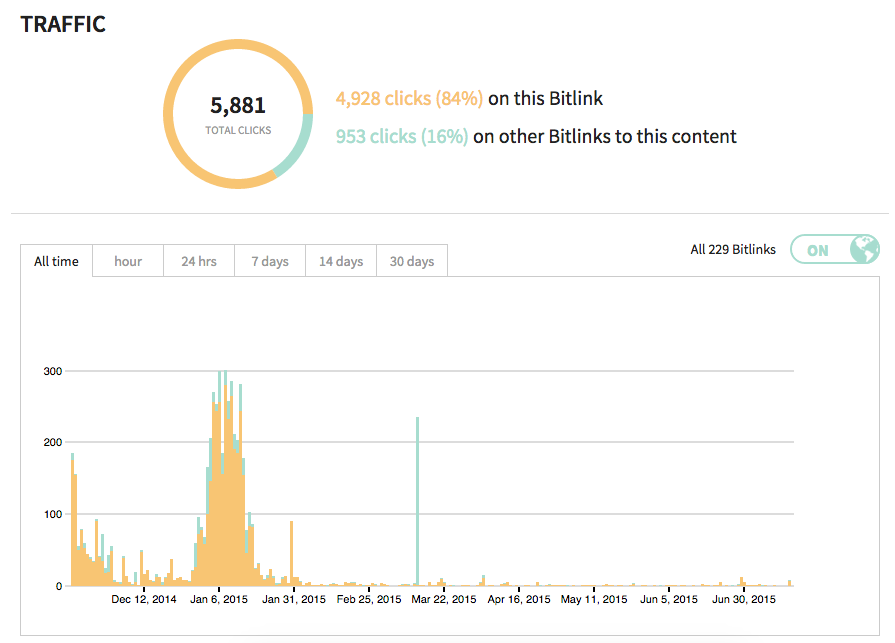
The graph above shows us all the clicks on links that shared the Trunkster Kickstarter campaign page.
It starts off with a blast in November and then quickly levels off and then another spike starting around January 1st.
This is also reflected in the money they raised:

This graph shows a similar pattern, a big peak to start out, with a fat tail at the end.
Let’s take a close look to see what went on behind that timeline.
If we take a look at all the articles that got published on launch day (November 18th), we can see an impressive line-up. There were general outlets like Huffington Post, SFexaminer and Cnet. But also gadget blogs like Thrillist and travel sites like Flightaware and Travelexperta.
These examples, amongst numerous others were no doubt part of all the work the Trunkster team had put into creating a great pitch and connecting with the right people.
After the initial success, a lot of other publications ran the story, and the Trunkster team kept reaching out to get more coverage.
Around New Year, the campaign was getting close to the magical $1M mark. This was a great reason to get back in touch with all their press buddies to write an update. That’s when articles such as The First Kickstarter project to hit $1M in 2015 came out.
Other sites followed which resulted in articles on Uncrate, Slashgear, Inc and Gizmodo. This brought fresh traffic to the campaign and resulted in that last bump in pledges.
One final trick that Potash found worked best was to cross-promote other live Kickstarter campaigns. If it makes sense with you audience, there is no doubt a lot of opportunity in this cross promotion.
PRINCIPLE 6: Luck Favors the Prepared
Whenever you see an overnight success, chances are the the bulk of the work has been done beforehand and behind the scenes.
So if you’re launching a new product (or a crowdfunding campaign of your own), what can you do to make the outcome more successful?
It’s not to hard: reach out to the right people and get their feedback. These can be press contacts or influencers in your industry.
Even if you don’t end up using other people’s advice, it involves them in your project and creates a small sense of ownership on their part.
While 10 articles about your store dripped out over two months time might be still great, it doesn’t have the same effect as being on 10 sites at the same time.
Building these relationships (and pitches) beforehand can help create momentum when you’re ready to launch.
Store 6: Cocowhite
Cocowhite sells a natural teeth whitener based on coconut oil.
They keep it simple: 1 product with 3 different flavours.
The entrepreneurs behind the company: Jonny Teeling and Will Peirce have started a couple of ventures in the past.
In this new business, they tried to replicate everything they’ve learned before to create “hockey stick growth” from day one.
What is interesting is that as soon as Cocowhite was open for business, a lot of celebrities started posting pictures with Cocowhite products on Instagram and Twitter.
A quick look at one of their previous companies, Bootea, reveals a similar strategy: pay celebrities and models to promote their products on social media.
So let’s see how both companies stack up on social media:
- Bootea: in 2+ years – 50k followers on Twitter – 463k on Instagram.
- Cocowhite: in 6 months – 28k followers on Twitter – 316k followers on Instagram
Both companies sell products in the same niche, so when they launched Cocowhite, they had a playbook ready.
This allowed them to grow a lot faster. On top of that they probably understand very well how to use Instagram and Twitter effectively and how to generate sales from it.
A third benefit is that most of the celebrities promote both Bootea and Cocowhite (in different posts), which probably gets them a better deal.
Currently the companies have focused most of their marketing firepower on the UK where they have enlisted celebrities with 500k to a couple of million of followers.
Being endorsed by several of these accounts reaches a lot of people. And it might help to create the impression that everyone is using Cocowhite teeth whiteners.
Recently the company has gotten a couple of endorsements from Vanessa Hudgens (US celebrity) which might point into them expanding into the US. She has 8.8M followers, so without a doubt this is a next level for the company!
PRINCIPLE 7: Endorsements
In a world where a lot of people have learned to tune out advertising, endorsements still offer a backdoor to grab the attention of potential customers.
When done well, content blends in nicely with promotion and it doesn’t feel too pushy.
If you don’t want to spend money, maybe can start by giving away products to influencers to review (or wear).
When you see this works well (and leads to more business) you can scale it up and start paying for bigger and bigger endorsements.
Grow your own store with these principles
One things becomes clear after exploring all of these stories is that you don’t build a 7 figure business from scratch. Most of the entrepreneurs behind these ecommerce startups leveraged their previous experiences to get ahead faster in their new ventures.
But that doesn’t mean that you can’t use the principles that drove their success in your own business.
